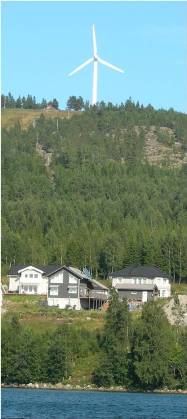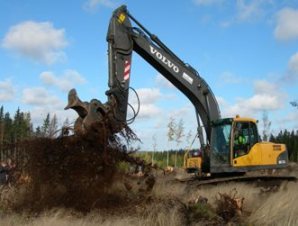Energy landscapes
Energy landscapes - integrating climate and environmental objectives.
Project leader: Ulla Mörtberg
Project participants: Xi Pang, Berit Balfors
Key words: Renewable energy, landscape ecology, environmental impacts, decision support systems
Projektperiod: 2010-2014
Project description

Increased use of energy from renewable sources is an important part of the measures needed to reduce greenhouse gas emissions and to promote the security of energy supply, supported by e.g. the EU Renewable Energy Directive. Therefore, a systems shift towards renewable energy sources as well as energy-efficient urban development and transport are main drivers for landscape change today. These drivers will affect rural and urban landscapes as they will increasingly be dominated by renewable energy generation and transfer. Renewable energy options such as wind power, bioenergy and hydro power and related infrastructure will, when widely implemented, have strong impacts on land use and environment – and thus landscapes. Also the scales of implementation, whether local scale decentralized energy systems closely related to demand nodes will dominate, or large scale systems for extraction and transfer to global energy markets will be the main target, will affect the new energy landscapes. For instance if policy will promote regional scale solutions for urban areas or remote solutions, for different types of energy carriers, will determine the development when played out in landscapes in urban regions as well as in rural areas.

Methods and tools for multi-criteria decision aid
In order to develop pathways for energy landscapes, to conduct strategic environmental assessments and for finding sustainable solutions, integrated landscape assessments can be conducted using spatial and non-spatial methods, where spatial methods build on Geographic Information Systems (GIS). Spatial problems can be handled with Multi Criteria Decision Aid (MCDA) in combination with the use of a GIS. The use of GIS-based MCDA will allow for localisation of suitable sites for wind power plants, for biomass production and related infrastructure from a technical perspective as well as for modelling a selection of potential environmental impacts and for integrating these aspects into realistic solutions, beneficial for a sustainable land use policy.
Aim
The aim with the project is to develop methods and tools for providing decision support concerning renewable energy generation, concerning energy sources that may cause fundamental land use and landscape change. The purpose is to find sustainable solutions for multiple use of landscapes, taking into account both energy and environmental aspects in integrated assessments.
The project is part of STandUP for Energy Systems , a cooperation between KTH, Uppsala University, Swedish University for Agricultural Sciences, and Luleå Technical University.
Seminar and workshop 23-24 August 2012: Energy landscapes - integrating multiple criteria for decision making

